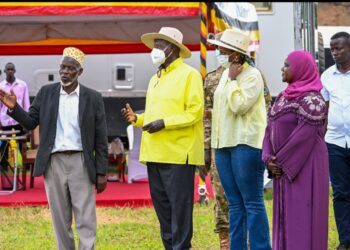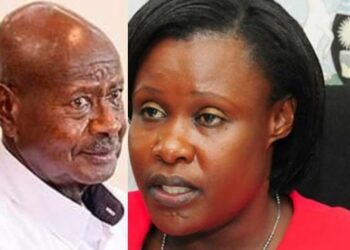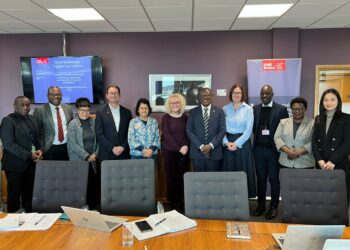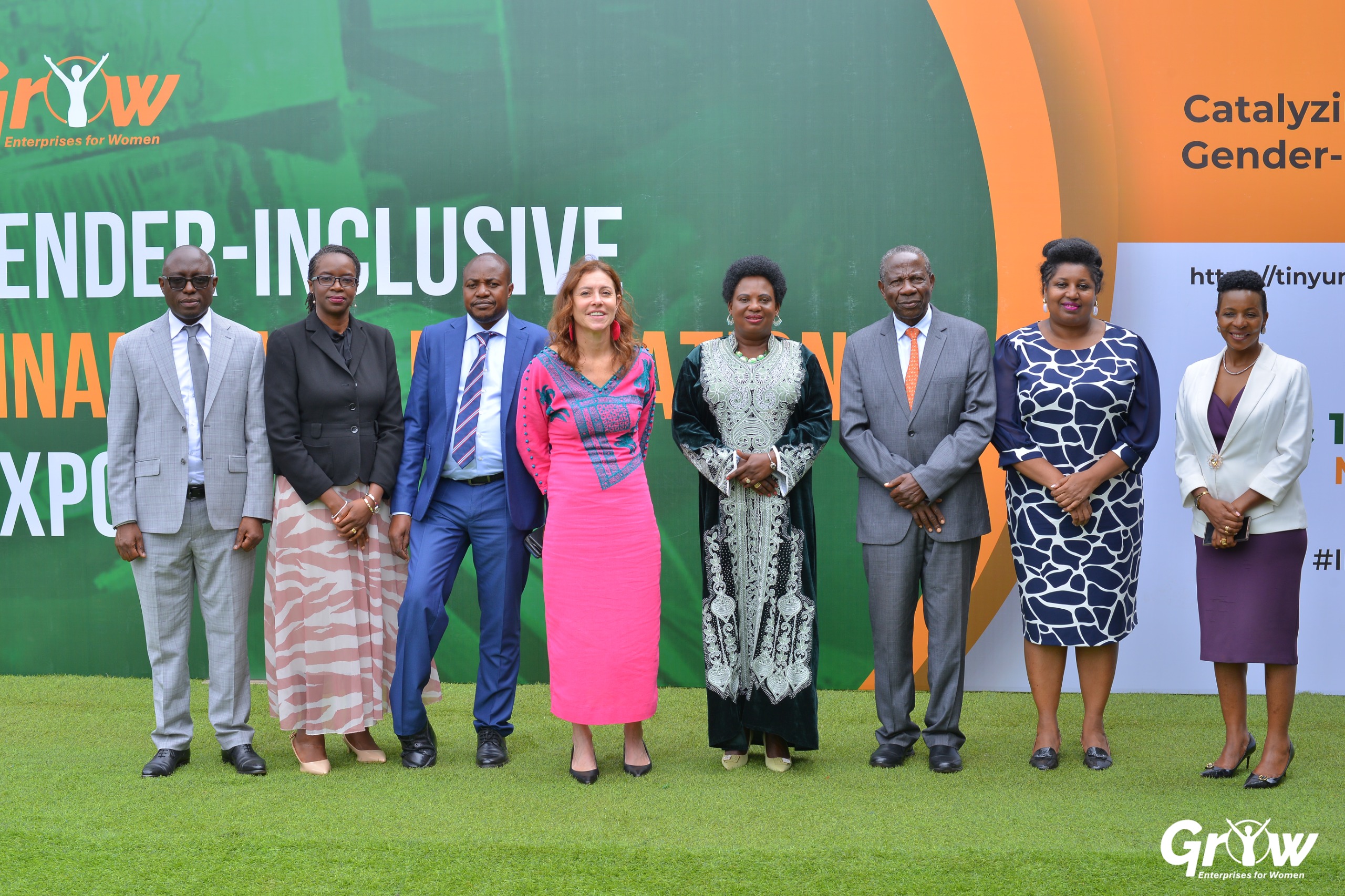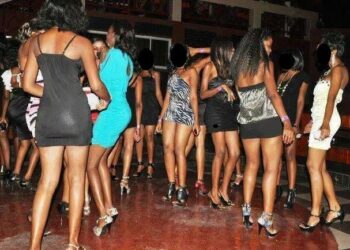Every February 1, Rwanda remembers her heroes who made special contribution through sacrifice and courage.
Rwandan heroes are categorised as ‘Imanzi’, ‘Imena’ and ‘Ingenzi’ respectively.
In 2001, the Rwandan government named former Rwandese Patriotic Front/Army (RPF/A) commander, Maj. General Fred Gisa Rwigema and the Unknown Soldier as national heroes in the first category.
The first category comprises the Unknown Soldier and Rwigema. The second category includes; the late King Mutara III Rudahigwa Charles Léon Pierre and Micheal Rwagasana. It also includes students of Nyange Secondary School in Ngororero District, former Kibuye district, who were massacred by Hutu militiamen during a raid on the school in 1997. The students were killed after refusing to be separated along ethnic lines of Hutus and Tutsis as ordered by Hutu extremists. This category also includes two women, Felisita Niyitegeka and Agatha Uwiringiyimana, who was prime minister when the Genocide broke out in April 1994. Uwiringiyimana was among the first Hutu leaders killed by presidential guards after the death of President Juvenal Habyarimana in a plane crash on 6 April 1994.
The Categories and Heroes
IMANZI: The supreme hero who demonstrated outstanding achievements characterised by supreme sacrifice, outstanding importance and example.
IMENA: is awarded to someone who for his/ her extraordinary acts for the country characterized by sacrifice, high importance and example.
INGENZI: is for good ideas or outstanding achievements characterized by supreme sacrifice, great importance and high example.

The Unknown Soldier (IMANZI).
The Unknown Soldier represents all the fallen soldiers of the liberation struggle. The tomb of the Unknown Soldier is at the National Heroes’ Mausoleum, Remera, next to Amahoro National Stadium. The tomb is a way of commemorating the soldiers whose remains could not be identified after the Liberation war.
MAJ GEN. Fred Gisa Rwigema (IMANZI).
Born on April 10, 1957 in Mukiranze village, Kamonyi District (former Gitarama) in the Southern Province, Maj Gen. Fred Gisa Rwigema died on October 2, 1990, on the second day of the Liberation War. His parents were Anastasie Kimonyo and Gatarina Mukandilima. The young Rwigema and his family fled to Uganda and settled in Nshungerezi Refugee Camp in the 1960’s following the 1959 uprisings.
On June 20, 1987, he married Janet Urujeni and they were blessed with two children: Junior Gisa and Teta Gisa. In 1974, he went to Tanzania and joined the Front for National Salvation (FRONASA), a rebel group led by President Yoweri Museveni of Uganda.
Later in 1976, he travelled to Mozambique and joined the FRELIMO rebels who were fighting for the Mozambican liberation against the Portuguese colonial power.
In 1981, 27 soldiers including Rwigema and his childhood friend and President Paul Kagame led by Museveni, started a liberation struggle against the then regime of Uganda president Milton Obote. Rwigema helped the National Resistance Army (NRA) capture state power in 1986 and was appointed the Ugandan Deputy Minister of Defence.
He was regularly at the front line in northern Uganda during the government’s offensive against remnants of the ousted regime. He attained several positions in the Ugandan army, including Deputy Army Commander and Overall Operations Commander. On October 1, 1990, he spearheaded Rwanda’s liberation struggle. He was shot at the front line on the second day of the attack.
Umwami Mutara III Rudahigwa Charles Léon Pierre (‘IMENA’)
He was the son of King Yuhi IV Musinga and Nyiramavugo Kankazi Redegonde. He became King on November 16, 1931 after the abdication of his father on November 13, 1931.
During his rule, King Rudahigwa advocated for the welfare of Rwandans, independence, democracy and fought against injustice through the King’s Court. He married Nyiramakomali on October 15, 1933 but separated in 1940. He then married Rosalie Gicanda on January 18, 1942. He worked hard to educate Rwandans through the establishment of the Mutara Fund and requested Jesuits to establish a college in Gitarama but, instead, the college was built in Bujumbura, Burundi. Rudahigwa later set up the Islamic college in Nyamirambo, a Kigali suburb and another school in Kanyanza and offered scholarships to many Rwandans to study in Europe.
Under his reign, he eliminated all forms of slavery and advocated for unity and reconciliation among Rwandans. King Mutara III Rudahigwa died under mysterious circumstances on July 25, 1959 in what many consider to have been an assassination.
Michel Rwagasana (‘IMENA’)
Michel Rwagasana was born in 1927, in Gitisi, Nyamagana of Ruhango District in the Southern Province. He attended Groupe Scolaire Astrida, attaining a Diploma in Administration. He married Suzana Nzayire in 1957 and the two were blessed with four children, but he never got a chance to see his last born because he died when his wife was three months pregnant.
Rwagasana attained several distinctive positions due to his integrity; he later became the Personal Secretary to King Mutara III Rudahigwa from 1954. He advocated for unity, independence and denouncing ethnic differences. He was killed during the regime of Gregory Kayibanda for declining to embrace ethnic segregation.

Agathe Uwilingiyimana (IMENA)
Agatha Uwilingiyimana was born on June 23, 1953, in Gitore, Gisagara District of the Southern Province. She was the daughter of Yuvenali Ntibashirakandi and Saverina Nyirantibangwa. She got married to Ignace Barahira in 1976 and was blessed with five children. Uwilingiyimana became the first woman to hold the position of Prime Minister in Rwanda’s history from July 17, 1993 to April 1994. Prior to that, she served as the Minister of Education where she advocated for equal rights among students. During her time in office, she advocated for the rights of women and spearheaded the fight against divisionism.
She was assassinated on April 7, 1994 by the presidential guards.
Felicite Niyitegeka (IMENA)
Born in 1934, Felicite Niyitegeka was the daughter of Simon Sekabwa and Angelina Nyirampabuka. She was killed on April 21, 1994 during the 1994 Genocide against the Tutsi. Niyitegeka is remembered for refusing to part ways with the people who found refuge at Centre Saint Pierre in Gisenyi presence day, Rubavu District.
She was just a casual worker when her brother asked her to separate from the Tutsis since the military was aware of her activities.
She declined.
When the Interahamwe militias came to her house, she already had over 30 Tutsi refugees in her house. The Interahamwe informed her that she would be spared but those in her custody would have to be killed, she opted to die with them.
Nyange Secondary School Students (IMENA)
The Senior Five and Senior Six students of Nyange Secondary School were on March 18, 1997, attacked by remnants of the ousted regime who forced them to separate themselves along ethnic lines. They refused and the attackers killed six of them, including four girls. Those that were killed are Sylvestre Bizimana, Chantal Mujawamahoro, Beatrice Mukambaraga, Seraphine Mukarutwaza, Helene Benimana, and Valens Ndemeye.
Do you have a story in your community or an opinion to share with us: Email us at editorial@watchdoguganda.com

